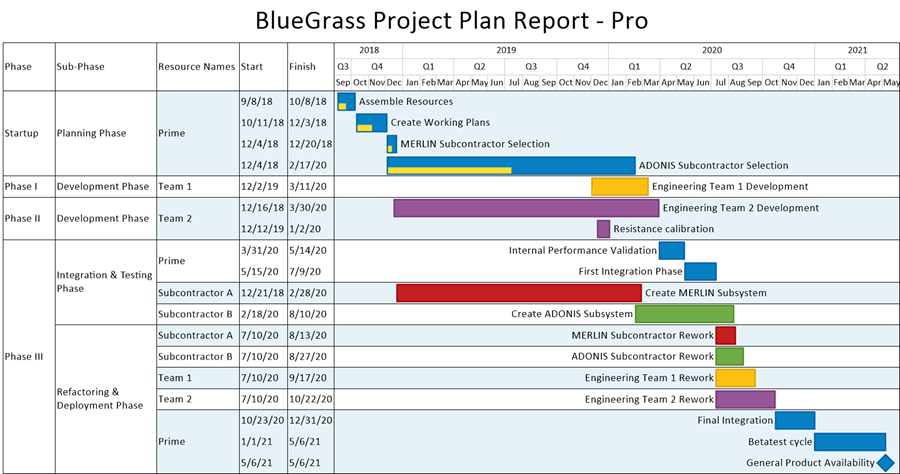Difference between revisions of "Creating and Editing Rows and Swimlanes for Version 7.0 (Portal)"
(→Manual Editing of Rows and Swimlanes in the Chart Editor) |
(→Editing Rows and Swimlanes Using Right-Click Context Menu Commands) |
||
| Line 245: | Line 245: | ||
| [[Editing Row Properties for Version 7.0 | Editing Row Properties]] 12.22.1-70 <!--| [[Editing Row and Swimlane Properties for Version 7.0 | Editing Row and Swimlane Properties]] 12.22.1-70--> | | [[Editing Row Properties for Version 7.0 | Editing Row Properties]] 12.22.1-70 <!--| [[Editing Row and Swimlane Properties for Version 7.0 | Editing Row and Swimlane Properties]] 12.22.1-70--> | ||
|- | |- | ||
| − | | [[Editing Swimlane Properties for Version 7.0 | Editing | + | | [[Editing Swimlane Properties for Version 7.0 | Editing Swimlane Properties]] 12.23.1-70 |
|- | |- | ||
|} | |} | ||
Revision as of 15:18, 30 July 2020
Contents
About Creating and Editing Rows and Swimlanes
1) Rows and swimlanes are a feature of OnePager that help you to group, collect, and sort project tasks and milestones dynamically based on your underlying project data.
2) This article covers how to create rows and swimlanes in your charts and perform manual edits on the properties of rows and swimlanes.
3) The articles in this series provide overview and detailed instructions on how to use the new OnePager Multiple Swimlanes Levels Feature.
4) Most row and swimlane editing is done globally, so you should also read the Editing with the Chart Properties form (Portal) 21.0.1-70 articles to familiarize yourself with some of the more common row and swimlane features.
5) Manual editing of row and swimlane properties is done in the Chart Editor using the capabilities documented in the the link sub-section.
Creating a Chart with Rows and Swimlanes
1) OnePager Pro and Express are distributed with a number of Templates Properties forms that can be used to create various chart looks. Many of these Templates Properties forms already have swimlanes defined. See the article at: Managing Templates (Portal) 24.0.1-70 for more information.
2) Our recommendation for first users of OnePager is to create your first chart with the format specified by the current Template Properties form. Once the chart is created, you have the capability to make edits including designating which source plan field should be used to control the creation of rows and swimlanes.
3) For the purpose of this article series, we assume that you have created a chart without any visible rows or swimlanes and that you desire to organize your chart into swimlanes and provide at least one text column per row in the chart to display source plan information. Please review the Getting Started article at: Getting Started (Portal) 3.0-70 to see the creation of a chart with a swimlane.
Links to Detailed Articles on Creating and Editing Rows and Swimlanes
1) OnePager version 7.0 has a new feature called: multiple swimlane levels.
2) A Gantt chart with multiple swimlane levels and multiple text columns is shown here:

4) In the illustration above, the first three columns in the chart are the three multiple swimlane levels and the two columns to their right are two text columns.
5) Timeline layout charts where multiple source plan tasks are placed in a single chart row can also have multiple swimlane levels and text columns.
6) A description of this new feature and an overview of its operations and controls are provided in the first two articles at the links below.
7) Our recommendation for new OnePager Pro and Express users is that you read the two articles in the table of links below to become familiar with the multiple swimlane levels concepts and the forms and controls available before using multiple swimlane levels to construct new charts.
8) Experienced OnePager Pro and Express users are advised to review the first article and familiarize yourselves with the new organization and layout of the enhanced forms and controls contained in the second article below:
Overview and Summary Articles
| About OnePager's Rows and Swimlanes 12.0.2-70 |
| Using the Multiple Swimlane Levels Feature - Overview 12.0.3-70 |
9) The articles in the tables of links below provide detailed information on creating and editing rows and multiple swimlane levels for OnePager Pro and Express version 7.0:
Creating, Formatting, and Editing Rows and Swimlanes with the Chart Properties Form
| Collecting, Formatting, and Sorting Task/Milestones into Rows 12.01.1-70 | |
| Creating, Formatting, and Sorting Swimlanes Levels 12.02.1-70 | |
| Creating and Formatting Text Columns 12.03.1-70 | |
| Row and Swimlane Borders 12.04.1-70 | |
| Automatically Hiding Empty Rows for OnePager Pro 12.05.1-70 | Automatically Hiding Empty Rows for OnePager Express 12.05.2-70 |
| Snapshot-Dependent Text Columns for OnePager Pro 12.4.1-70 | Snapshot-Dependent Text Columns for OnePager Express 12.4.2-70 |
Manual Editing of Rows and Swimlanes in the Chart Editor
| Resizing the Width of Text Columns and Swimlanes 12.8.1-70 |
| Moving Rows 12.9.1-70 |
| Moving Swimlanes 12.10.1-70 |
| Resizing the Height of Rows 12.11.1-70 |
| Resizing the Height of Swimlanes 12.12.1-70 |
| Manually Hiding and Unhiding Swimlane Levels 12.5.1-70 |
Editing Rows and Swimlanes Using Right-Click Context Menu Commands
| Editing Text Columns or Swimlane Labels 12.3.1-70 |
| Hiding and Unhiding Rows and Swimlanes 12.13.1-70 |
| Adding a Row or Swimlane 12.16.1-70 |
| Splitting Swimlanes 12.17.1-70 |
| Grouping Rows into Swimlanes 12.18.1-70 |
| Adding a Row to a Swimlane 12.19.1-70 |
| Making Each Row into a Swimlane 12.20.1-70 |
| Merging Swimlanes 12.21.1-70 |
| Editing Row Properties 12.22.1-70 |
| Editing Swimlane Properties 12.23.1-70 |
Zebra Striping Rows and Swimlanes
| Zebra Striping for Rows and Swimlanes for OnePager Pro 12.24.1-70 | Zebra Striping for Rows and Swimlanes for OnePager Express 12.24.2-70 |
(12.0.1-70)